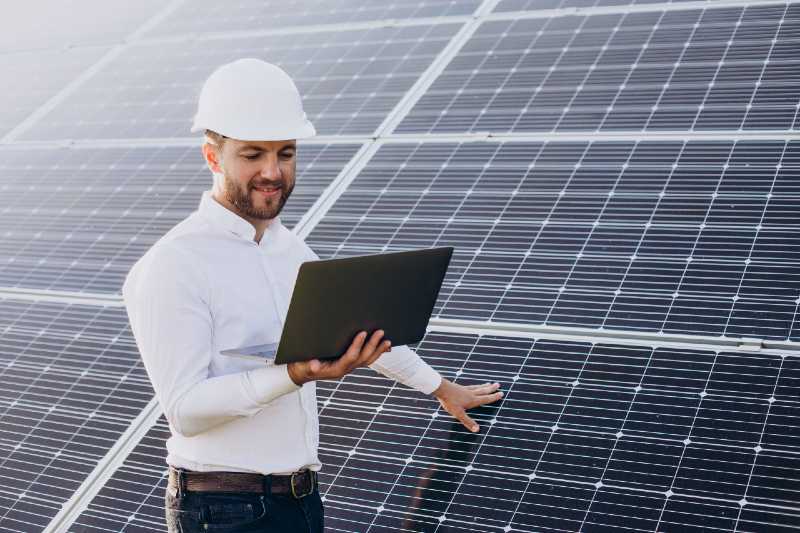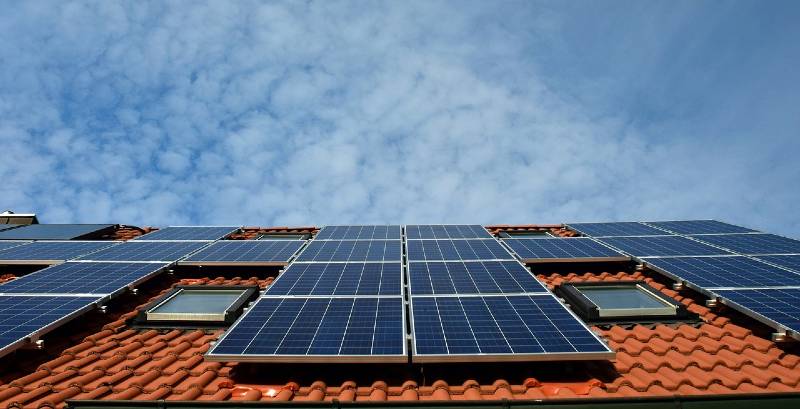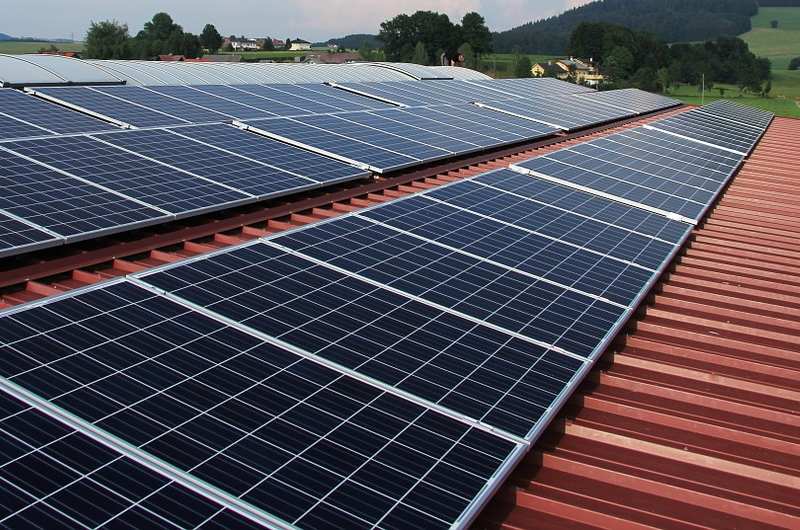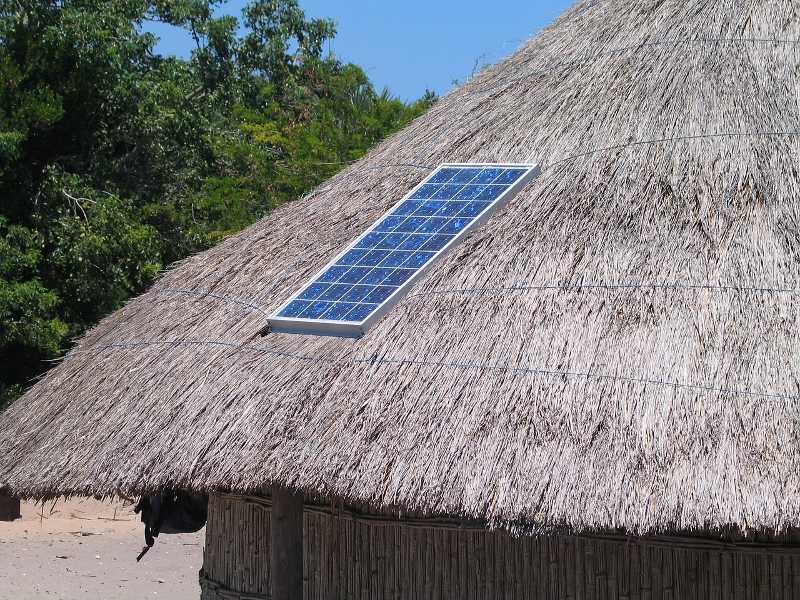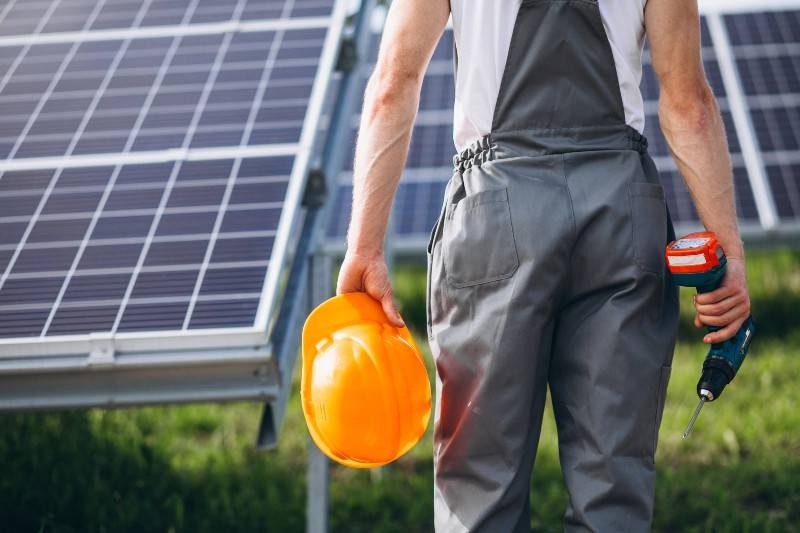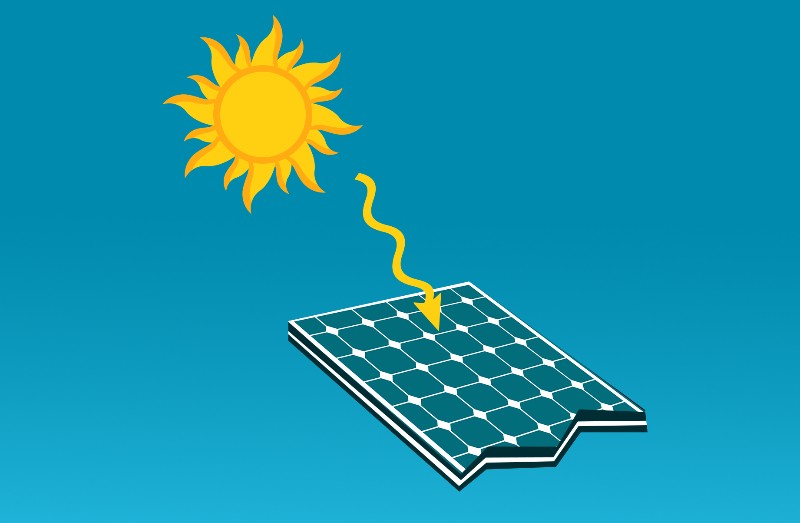If you are interested in powering your shed with solar energy, then you are just in the right place.
In this article, you’ll discover what is a solar shed, the different types of solar shed systems, and the pros and cons of using solar panels on your shed.
You’ll also learn how to design a customized solar system for your shed from scratch.
So without further ado, let’s jump right into it.
Key Takeaways
- There are 2 types of solar sheds: DC and AC solar sheds
- DC solar sheds can only power low-voltage DC appliances such as LED lights and DC fans. This type of solar system can cost $100-$300
- AC solar sheds are more powerful and can power any home appliance you can think of but they are also more complex and cost anywhere from $2,000 to $10,000.
- To power the shed with solar energy you need approximately 52-87.5ft² of roof space.
- To build an AC shed you need solar panels, a battery bank, a charge controller, an inverter, a fuse box, an AC outlet, and connection wires.
What Is a Solar Shed?
A solar shed is just like what it sounds – a shed that is powered by solar energy.
Most sheds are built far from the solar service panel, making it quite hard to get electricity to them.
You need long cords, dig deep trenches to bury the conduit, and run wires through your shed.
That’s without mentioning the hazards that come when working with live electricity.
Powering your shed with solar energy, on the other hand, is much safer and actually faster than connecting your shed to the grid.
And on top of that, you’ll be saving tons of money on electricity bills!
AC vs. DC Solar Sheds
If you decided to go for a solar shed, then you have 2 solar system options:
1. DC Solar Shed
A direct current (DC) solar system is the simplest and cheapest type of solar system.
It consists of 1-2 solar panels and a small battery.
It’s also quite cheap, the whole system costs about $100-$200 and it’s extremely easy to install.
The only downside to this system is that it can only power small DC appliances like indoor solar lights, solar fans, or your phone.
If you need to power any AC appliances or high-power DC devices, then you’ll need an AC solar system.
2. AC Solar Shed
If you are interested in turning your shed into a man cave or a she shed, then you need an alternating current (AC) solar system.
Unlike DC solar systems, this type of system can power all your appliances.
It can power refrigerators, microwaves, air conditioners, TVs, satellite dishes, Wi-Fi routers, laptops, and any other household appliance you can think of.
The downside to this type is that it’s more complex and expensive to build.
For a completely off-grid solar shed, you need 4-5 solar panels, a charge controller, a battery, and an inverter, which will cost you approximately $4,000 to $5,000.
How Much Do Solar Sheds Cost?
| Solar Shed System Size | Solar Shed System Price |
|---|---|
| 500W | $2,000 |
| 1kW | $4,000 |
| 1.5kW | $5,500 |
| 2kW | $7,000 |
What Are the Pros of Solar Sheds
1. High Return on Investment
One of the best advantages of installing solar power for a shed is that you get to save tons of money on electricity bills.
Let’s say you are investing in a 1kW solar system for your shed.
This solar system will cost about $3,000 and will generate approximately 5kWh per day or 1800kWh per year.
Assuming your kWh rate is 28 cents, this solar shed system will save around $500 per year.
In other words, your solar system will pay back for itself in less than 6 years!
And since most solar systems have an average lifespan of 25 years, you’ll get 19 years of free electricity.
That’s $9,576 of solar savings on top of your initial investment money back!
2. Increase the Value of Your Home
According to the Appraisal Journal, your home value increases by $20 for every $1 you save on electricity bills.
In other words, if your solar power system saves you $500 of energy per year, your home value increases by $10,000!
3. Qualify for Solar Incentives
The government wants you to invest in more clean and renewable energy sources as a way to combat climate change and reach the 100% renewable goal by 2035.
One way to encourage solar energy adoption is to offer many local and federal solar incentives.
If you invest in a solar system, you’ll get 30% of its total cost back as a federal tax credit.
So if you bought a $10,000 solar shed system, you will get $3,000 back from the government as a tax credit.
Also, there are many local and state solar incentives you can qualify for, so make sure to check them out.
4. Backup Energy in Outages
Another advantage of having solar power for sheds is that you no longer rely on the grid.
This is particularly important if you live in a rural area where the grid system is so old and power outages are more frequent.
5. Less of a Hassle to Install
I’ll be honest with you, both running electrical wires to your shed and installing a solar system is a pain in the neck.
But installing a solar system on your shed is definitely less of a hassle than dealing with live electricity and it’s also much safer.
6. Help the Environment
Finally, the last advantage of powering your shed with solar energy is that you get to reduce your carbon footprint.
I know many people don’t really care about helping the environment but it’s an added bonus.
After all, why can’t you help the environment and save a lot of money at the same time?
What Are the Cons of Solar Sheds
1. Weather Dependant
The first and most obvious disadvantage of solar power for sheds is that you are at the mercy of the weather.
The amount of power you produce doesn’t only depend on how much sunlight you get but also on the angle and intensity of the sunbeam.
Clouds can scatter sunlight, trees, and other objects can block sunlight, and snow & dust can cover solar panels and reduce their efficiency.
All of these factors and more make solar energy less reliable.
One way to combat this con is to have large batteries to store the energy produced for overcast days, but batteries are quite expensive and you’ll have to opt for a bigger solar system to produce more energy than you need.
2. High Upfront Cost
Solar systems are pretty expensive.
Even with all the tax credits and solar incentives, solar power for sheds will still cost you a few thousand dollars.
This can be a lot of money, especially with the current shaky economy.
3. Need a Strong Roof
Solar panels are heavy.
The average residential solar panel weighs about 42 pounds and for an AC solar shed system, you’ll need at least 2 of those.
If your shed’s roof can’t take the extra weight, then you’ll have to opt for a ground-mounted solar system or fix your shed’s roof, which will cost you more money.
How Much Roof Space Do You Need for a Solar Shed?
You need approximately 52-87.5ft² of roof space for solar sheds.
Of course, the exact number depends on many factors such as the solar panel type, the wattage of each panel, what size shed you have, your energy consumption, and where you live.
Don’t worry, solar panels won’t damage your shed’s roof or let water in.
What Do You Need to Build a Solar Shed?
- Solar panels
- Battery bank
- Charge controller
- Inverter
- Fuse box
- AC outlets
- Connection wires
How Much Solar Power for Shed?
When it comes to powering your shed with solar energy, there is no cookie-cutter solution.
Each shed is different and requires a solar system that’s custom-tailored to its energy needs.
That’s why in this section, I’ll help you design a solar system for your shed.
Don’t worry, the math is pretty simple and I’ll walk you through it step by step.
1. Calculate Your Energy Needs
The first and most important step in designing a solar power system for sheds is to determine your energy usage.
This information will help us know how much energy your solar shed system needs to produce to cover your energy needs.
There are many ways to estimate your energy usage, but the best way -in my opinion- is to make a list of all the electrical appliances in your shed, their wattage rating, and how many hours you use them per day.
After that, I want you to multiply the wattage rating of each appliance by the number of hours you use them and add those results together.
Appliance Energy Usage = Appliance Wattage x Hours Used
Total Energy Usage = Appliance 1 Energy Usage + Appliance 2 Energy Usage …
By the end, you should have a table like this:
| Appliance | Watt (W) | Hour usage per day (h) | Daily Consumption (Wh) |
| Small Fridge | 75 | 8 | 60 |
| Microwave | 800 | 0.5 | 400 |
| Ceiling Fan | 35 | 8 | 280 |
| TV | 100 | 4 | 800 |
| Satellite Dish | 35 | 4 | 140 |
| Phone Charger | 5 | 4 | 20 |
| LED Lights (x2) | 40 (20*2) | 5 | 200 |
| Laptop | 100 | 3 | 300 |
| Water Heater | 1440 | 0.2 | 288 |
| Total Daily Consumption (Wh) | 2,488 |
2. Figure Out How Many Peak Sun Hours Your Shed Receives
The amount of electricity a solar panel can produce depends on how much solar irradiation it receives.
One way we calculate the amount of solar irradiation an area receives is by using something called peak sun hours, where a peak sun hour equals one hour of 1,000 watts of solar radiation per square meter (1,000W/m²).
Luckily, you don’t need to do any calculations, just enter your city name or ZIP code in this solar calculator and you’ll be able to see how many peak sun hours you get per day in your area.
In my case, I live in California and I get 5.31 peak sun hours per day, so that’s the number I will use in my calculations.
3. Calculate the Theoretical Solar System Size
Now that you know both your energy consumption and how many peak sun hours your shed receives per day, all you have to do is plug these numbers into this equation:
Theoretical Solar System Size (W) = Energy Usage (Wh) / Peak Sun Hours (h)
In our case, my shed uses about 2,488Wh per day and I receive 5.31 peak sun hours, so this means I need a 470W solar system.
4. Factor in Solar Losses
Sadly, you don’t get 100% of all the electricity you produce.
You lose a lot of power due to shading, thermal losses, array mismatch, cord efficiency, solar degradation, and inverter efficiency.
All these losses can make up to 24% of the actual solar system output but on average let’s say solar panels lose about 17% of their solar power.
So now we need a 17% bigger solar system to cover our energy needs.
Real Solar System Size = Theoretical Solar System Size (1 + 0.17)
This means that in our case, we would need 550W of solar panels.
So I’ll buy three Renogy 200W solar panels.
5. Determine Battery Size
For an off-grid solar shed system, we need a battery to save all that energy produced during the day, so we can use it at night.
Theoretical Solar Battery Size = Electricity Usage / Battery Nominal Voltage
So for our solar system, we need a 12V battery that can hold 200Ah of charge (2,488/12) or a 24V battery that can hold 100Ah of charge (2,488/24).
Now, there is one crucial thing you need to consider, which is the battery DoD.
Batteries have something called depth of discharge (DoD), which is how much energy you can safely draw from the battery without damaging it.
Lead Acid batteries have 50% DoD, meaning that you can only draw 50% of their rated capacity without damaging them.
In other words, to store 200Ah of electricity, you need a 12V 400Ah lead acid battery.
Lithium batteries, on the other hand, have a DoD of 80%, so to store 200Ah, you need to buy a 12V 250Ah lithium battery.
It’s not so complicated, just divide the battery size you got from the previous equation by the battery DoD.
Real Solar Battery Size = Theoretical Solar Battery Size / Battery DoD
I prefer lithium batteries, so I’ll use a 24V 120Ah lithium battery for my shed.
6. Determine Charge Controller Size
To protect your battery from overcharging and regulate the flow of electricity from your solar panels to the battery, you need a charge controller.
The size of your charge controller merely depends on the solar battery voltage and how you configure the solar panels (series or parallel).
In our case, we will use three 200W solar panels and connect them in parallel.
Using this charge controller size calculator, it looks like we need a 31A controller.
So I’ll use the Renogy 40A MPPT solar charge controller.
7. Determine Solar Inverter Size
Finally, we need an inverter to convert the DC current produced by the solar panels to a usable AC current to power our shed appliances.
As a general rule of thumb, you want your solar inverter rating to equal the size of your solar system.
And since we have a 550W solar system, you should get a 600W solar inverter.
Now, there is a problem.
Since we need to power an 800W microwave and a 1,440W kettle.
A 500W inverter simply can’t power them.
That’s why many experts recommend that you opt for a solar inverter 1.5 times bigger than the largest appliance you have.
So in this case, you need a 2,100W solar inverter.
FAQs
How Many Solar Panels Do I Need for a Shed Roof?
You need around three 200W solar panels for a standard shed roof.
Can I Heat My Shed with Solar Power?
You need about nine 200W solar panels to heat a shed with solar power.
Do You Need Planning Permission for Solar Panels on a Shed?
You need planning permission to install solar panels, as solar is considered a home improvement project.
Are Solar Sheds Worth It?
Solar sheds are definitely worth it.
They will save you tons of money in the long run, increase the value of your home, provide you with much-needed electricity in case of a power outage, and reduce your carbon footprint.
So if you’re looking to add solar power to your shed, I highly recommend investing in solar power for your shed.

